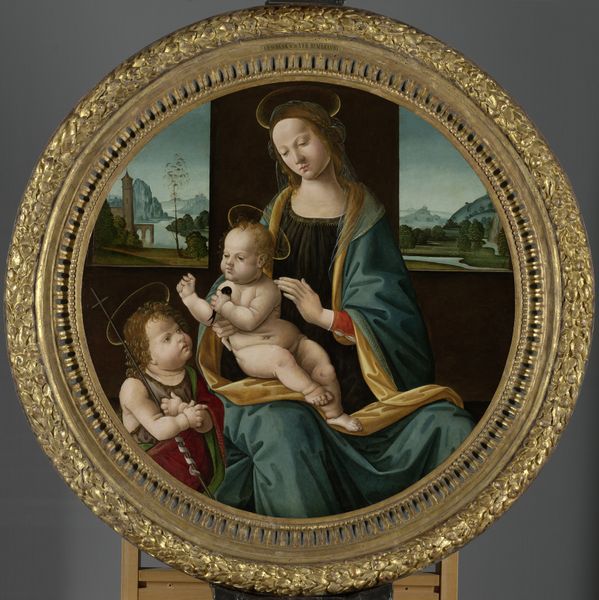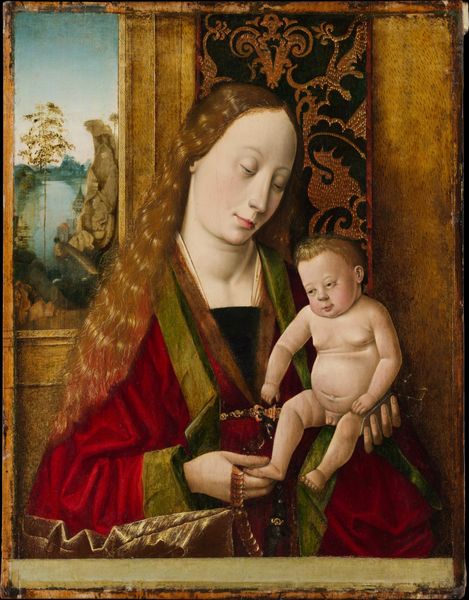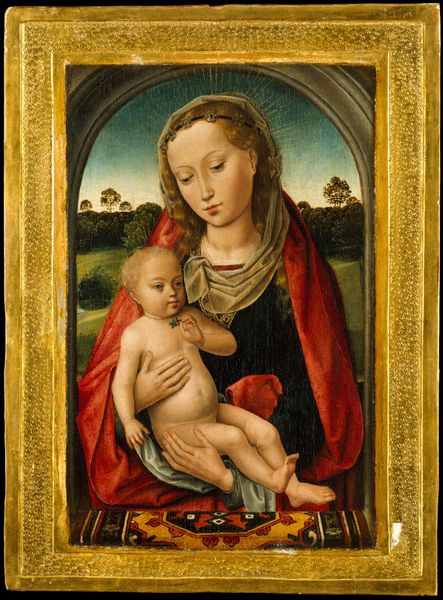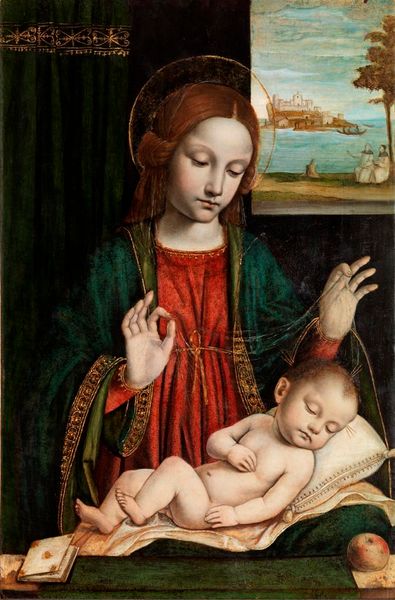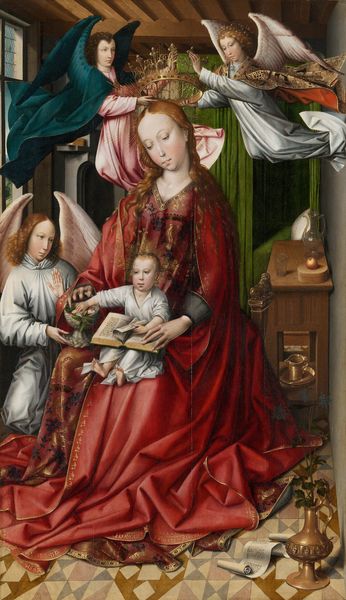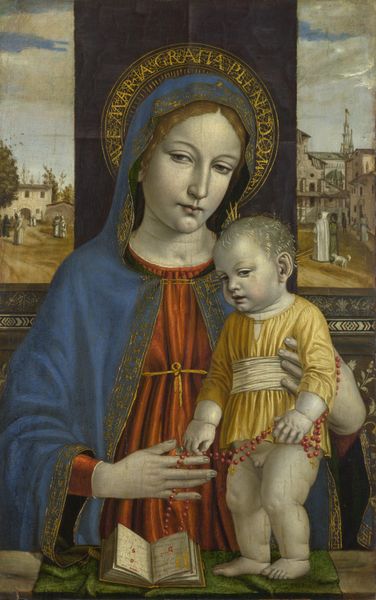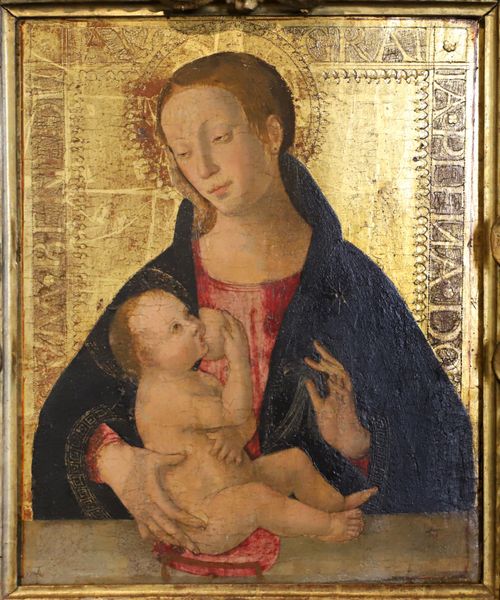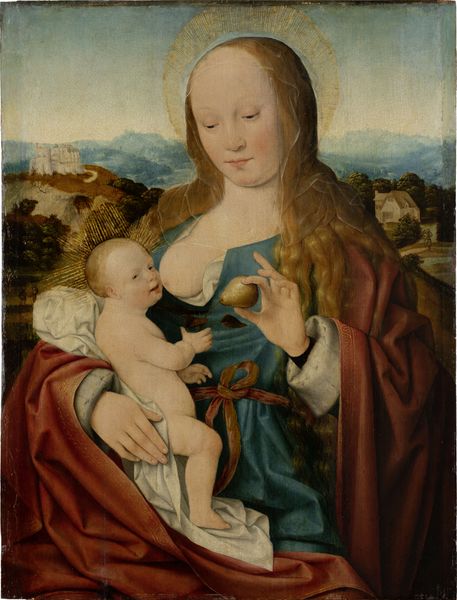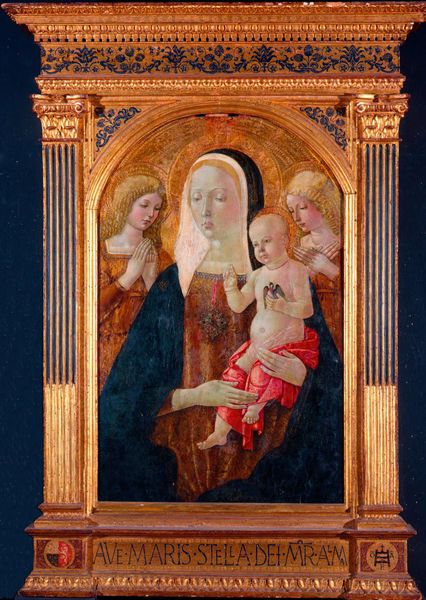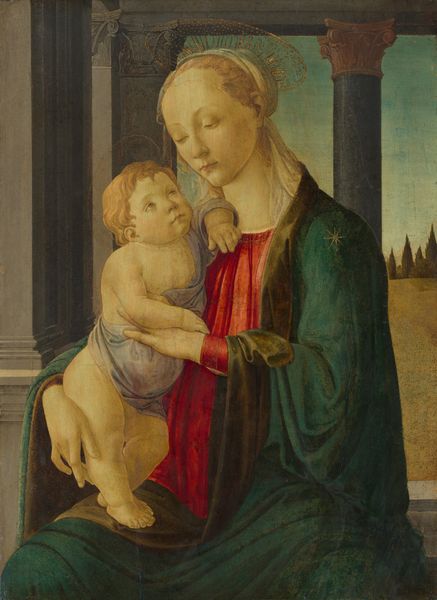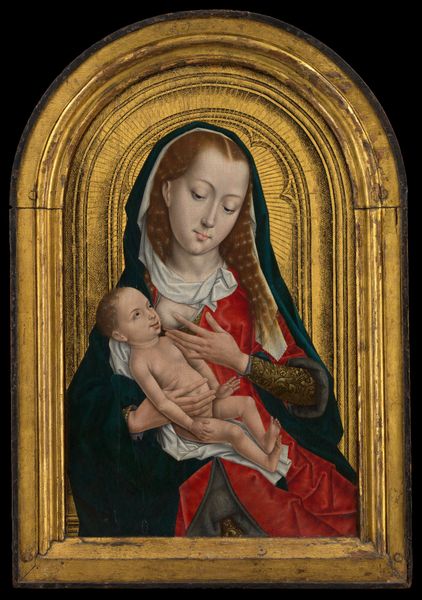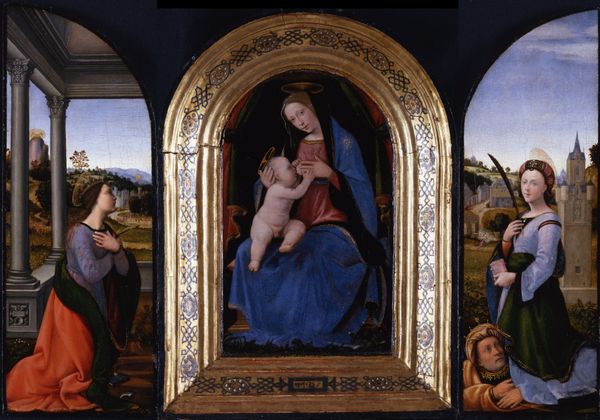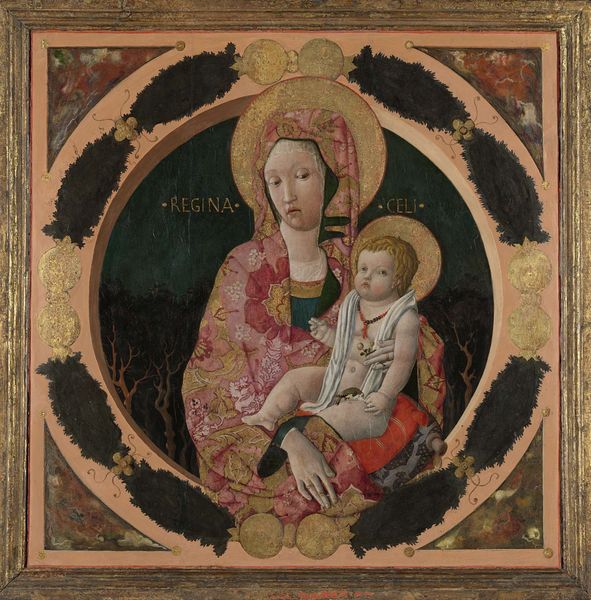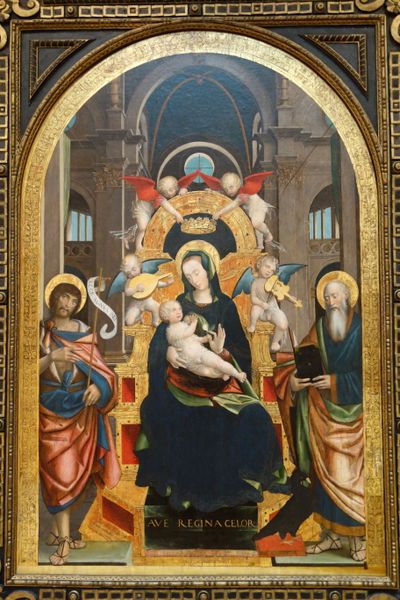
Triptych with Virgin and Child, Saint John the Evangelist (left wing) and Mary Magdalene (right wing) c. 1505 - 1525
0:00
0:00
panel, painting, oil-paint
#
portrait
#
panel
#
painting
#
oil-paint
#
sculpture
#
figuration
#
oil painting
#
history-painting
#
northern-renaissance
Dimensions: support height 57 cm, support width 45 cm, support height 57 cm, support width 22 cm, support height 57 cm, support width 22 cm, sight size height 49.5 cm, sight size width 61 cm, sight size height 44.3 cm, sight size width 30.5 cm, frame height 58 cm, frame width 45 cm, sight size height 50.2 cm, sight size width 15.1 cm, frame height 57.7 cm, frame width 22.3 cm, sight size height 50.3 cm, sight size width 14.7 cm, frame height 57.4 cm, frame width 22.3 cm
Copyright: Rijks Museum: Open Domain
Editor: This is a Triptych from circa 1505-1525 by Jan Provoost, created using oil paint on wood panel. It's a visually striking piece, this northern Renaissance painting. The colour palette is also beautiful. I'm struck by the precision of the detail, which probably was not easy to execute at the time. How do you approach the meaning of the use of these materials in the period it was produced? Curator: When considering Provoost's triptych, I am drawn to the materiality itself: the panel support, the oil-based pigments. These weren't merely neutral vehicles for representation, but active agents in defining the painting's meaning and reception. Where do we see the sourcing for pigments in the global trade routes? What were the conditions for the making of these panels? Were there other options that he might have chosen? Editor: That’s interesting, the notion that materials have an agency. So, if panel was a scarce material, would that imply a patron of high status, willing to commission an artist despite production costs? Curator: Precisely. Think about the laborious process of grinding pigments by hand. What level of patronage and social capital would that necessitate? And consider the function of a triptych like this. Where might it have been displayed and what function would it have had in everyday life? Editor: Maybe in a wealthy family’s private chapel? Was this only accessible to the elite due to its cost of production? Curator: Possibly. Now, observe how the oil paint is applied. Note the build-up of glazes in certain areas, versus the thinner washes elsewhere. How does this controlled manipulation of the materials direct our gaze and reinforce a hierarchy of value, emphasizing certain figures or objects over others? Does this contrast with other media being employed in this time? Editor: I hadn’t considered that. So it's not just about the religious subject matter but also about how the physical construction and deployment of materials is itself a form of communication and control. This connects religious art production to economics. Thanks for sharing this new perspective! Curator: Absolutely! Seeing art through the lens of material production provides tangible insight into its cultural and economic context.
Comments
No comments
Be the first to comment and join the conversation on the ultimate creative platform.
